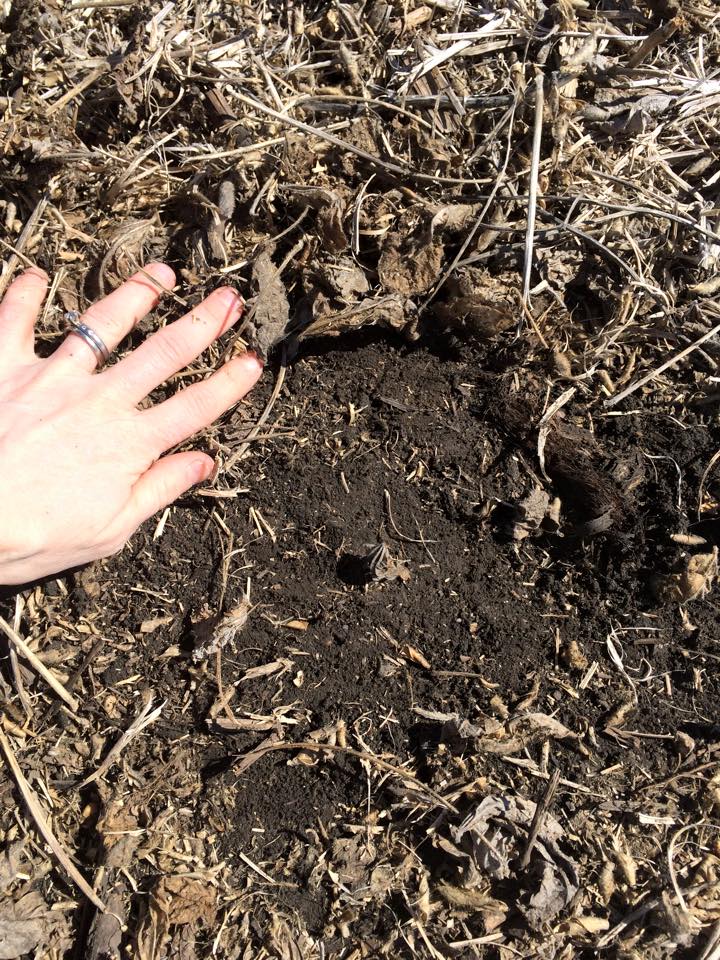They say diamonds are a girl’s best friend. The bigger and sparklier the gem, the more it draws attention. Don’t get me wrong, I wouldn’t turn down a diamond – but for me, a farmer in central North Dakota, healthy soil is the sparkle that helps keeps our farm sustainable.
Protecting the health of the soil is good for my land and also ultimately protects our waterways. It’s a big responsibility. Here are a few sustainable practices we use on our farm that help to do this.
Conservation Tillage
To plant a crop, farmers must first prepare the soil. If you garden, you’ve likely tilled your garden bed to cultivate land for seeds. Farmers do this, too, just on a much greater scale. With conservation tillage, we leave corn stalks and wheat stubble from the previous season’s crop on the ground. This prevents soil erosion (it’s windy in North Dakota, so dirt can blow away) and allows for nutrients to be absorbed by the soil when the stalks, stubble, roots decompose providing organic matter and nutrients for the next crop.
It is very much like a compost pile the size of hundreds of football fields. Last year’s crop residue also serves as a blanket, warming the soil beneath. This allows us to plant earlier in the spring, allowing more time for plants to grow. It also creates an inviting habitat for birds and small game. Increasing organic matter, maintaining nutrients, conserving moisture and preparing the soil to grow the best quality crop is essential for our farm in order to be sustainable.
Crop rotation
As its name implies, we rotate crops by year and field. Different crops require different nutrients. For example, soybeans create and deposit nitrogen into the soil. This builds up over the season, so the following year we can plant corn, which requires a large amount of nitrogen, without having to add additional nitrogen fertilizer on most fields.
Crop rotation also helps with pest and disease management. Planting the same crops on the same field, (ie. corn for two or three years in a row) can increase the opportunity for diseases and pests to find a home within or on the plants. Sometimes these pests and diseases can be resolved with crop protection products once they occur, but on our farm we rotate crops to reduce the need for product, allowing us to using pesticides only when necessary.
Buffer strips
We leave strips of grasses, brush and wild flowers between the fields where we grow crops and nearby water sources. The width of the strips are decided upon by us. We take into consideration several things when deciding how wide the buffer is: the grade of the land, the type of soil, the plants growing, potential for alternative use and whether or not it poses a risk to lack of crop and/or machinery getting stuck. Our self-designated buffers range from approximately 12 inches to several yards. This is important for several reasons. Buffer strips help keep soil in place despite heavy rains or melting snow. They also capture nutrients before they reach waterways, protecting both the soil and the water.
Soil may not be flashy, but it is a diamond in the rough, supporting health for plants and animals alike.
